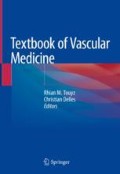Abstract
The most common type of stroke is ischaemic stroke whereby a blood vessel within the brain is occluded resulting in ischaemic injury to surrounding brain tissue. Loss of blood flow results in energy failure within cells leading to cell death through metabolic acidosis, ionic imbalance, excitotoxicity and reactive oxygen species (ROS) production. Clinically, treatments for ischaemic stroke aim to restore blood flow in order to salvage compromised brain tissue, known as the ischaemic penumbra, and reduce the size of the irreversibly damaged infarct core. The restoration of blood flow, however, can result in further tissue damage through excess ROS production and immune response, known as reperfusion injury. Despite numerous preclinical and clinical trials, currently there are no neuroprotective therapeutics to target this ischaemia-reperfusion injury, but with significant service reorganisation and an extended therapeutic window with thrombectomy procedures, hope for such approaches has been renewed.
Access this chapter
Tax calculation will be finalised at checkout
Purchases are for personal use only
References
Sacco RL, et al. An updated definition of stroke for the 21st century: a statement for healthcare professionals from the American Heart Association/American Stroke Association. Stroke. 2013;44(7):2064–89.
Benjamin EJ, et al. Heart disease and stroke statistics-2017 update: a report from the American Heart Association. Circulation. 2017;135(10):e146–603.
Feigin VL, Norrving B, Mensah GA. Global burden of stroke. Circ Res. 2017;120(3):439–48.
Stroke Association. State of the Nation: stroke statistics. 2018.
Hankey GJ. Stroke. Lancet. 2017;389(10069):641–54.
Schulz UGR, Rothwell PM. Differences in vascular risk factors between etiological subtypes of ischemic stroke. Stroke. 2003;34(8):2050–9.
Radu RA, Terecoasă EO, Băjenaru OA, Tiu C. Etiologic classification of ischemic stroke: where do we stand? Clin Neurol Neurosurg. 2017;159:93–106.
Wolters FJ, Paul NLM, Li L, Rothwell PM, Oxford Vascular Study. Sustained impact of UK FAST-test public education on response to stroke: a population-based time-series study. Int J Stroke. 2015;10(7):1108–14., Oct.
Kasner SE. Clinical interpretation and use of stroke scales. Lancet Neurol. 2006;5(7):603–12.
Quinn TJ, Dawson J, Walters MR, Lees KR. Functional outcome measures in contemporary stroke trials. Int J Stroke. 2009;4(3):200–5.
Hankey GJ. Stroke. Lancet. 2016;389:641.
Frazer K, et al. Legislative smoking bans for reducing harms from secondhand smoke exposure, smoking prevalence and tobacco consumption. Cochrane Database Syst Rev. 2016;(2):CD005992.
Badhiwala JH, et al. Endovascular thrombectomy for acute ischemic stroke. JAMA. 2015;314(17):1832.
Nogueira RG, et al. Thrombectomy 6 to 24 hours after stroke with a mismatch between deficit and infarct. N Engl J Med. 2018;378(1):11–21.
Powers WJ, et al. 2018 guidelines for the early management of patients with acute ischemic stroke: a guideline for healthcare professionals from the American Heart Association/American Stroke Association. Stroke. 2018;49(3):e46–e110.
Yenari MA, Han HS. Neuroprotective mechanisms of hypothermia in brain ischaemia. Nat Rev Neurosci. 2012;13(4):267–78.
Moskowitz MA, Lo EH, Iadecola C. The science of stroke: mechanisms in search of treatments. Neuron. 2010;67(2):181–98.
Shirley R, Ord E, Work L. Oxidative stress and the use of antioxidants in stroke. Antioxidants. 2014;3(3):472–501.
Iadecola C, Anrather J. The immunology of stroke: from mechanisms to translation. Nat Med. 2011;17(7):796–808.
McCabe C, Arroja MM, Reid E, Macrae IM. Animal models of ischaemic stroke and characterisation of the ischaemic penumbra. Neuropharmacology. 2018;134(Part B):169–77.
Payabvash S, Taleb S, Benson JC, McKinney AM. Acute ischemic stroke infarct topology: association with lesion volume and severity of symptoms at admission and discharge. Am J Neuroradiol. 2017;38(1):58–63.
Friedman J. Why is the nervous system vulnerable to oxidative stress? In: Oxidative stress and free radical damage in neurology. Totowa: Humana Press; 2011. p. 19–27.
Orrenius S, Zhivotovsky B, Nicotera P. Regulation of cell death: the calcium–apoptosis link. Nat Rev Mol Cell Biol. 2003;4(7):552–65.
Görlach A, Bertram K, Hudecova S, Krizanova O. Calcium and ROS: a mutual interplay. Redox Biol. 2015;6:260–71.
Chouchani ET, et al. Ischaemic accumulation of succinate controls reperfusion injury through mitochondrial ROS. Nature. 2014;515(7527):431–5.
Patel AR, Ritzel R, McCullough LD, Liu F. Microglia and ischemic stroke: a double-edged sword. Int J Physiol Pathophysiol Pharmacol. 2013;5(2):73–90.
Ruan L, Wang B, ZhuGe Q, Jin K. Coupling of neurogenesis and angiogenesis after ischemic stroke. Brain Res. 2015;1623:166–73.
Aronowski J, Zhao X. Molecular pathophysiology of cerebral hemorrhage: secondary brain injury. Stroke. 2011;42(6):1781–6.
Ikonomidou C, Turski L. Why did NMDA receptor antagonists fail clinical trials for stroke and traumatic brain injury? Lancet Neurol. 2002;1(6):383–6.
Zhang J, Yang J, Zhang C, Jiang X, Zhou H, Liu M. Calcium antagonists for acute ischemic stroke. Cochrane Database Syst Rev. 2012;(5):CD001928.
Veltkamp R, Gill D. Clinical trials of immunomodulation in ischemic stroke. Neurotherapeutics. 2016;13(4):791–800.
Kurisu K, Yenari MA. Therapeutic hypothermia for ischemic stroke; pathophysiology and future promise. Neuropharmacology. 2018;134:302–9.
Lapchak PA, Zhang JH, Noble-Haeusslein LJ. RIGOR guidelines: escalating STAIR and STEPS for effective translational research. Transl Stroke Res. 2013;4(3):279–85.
Percie du Sert N, et al. The IMPROVE guidelines (Ischaemia Models: Procedural Refinements Of in Vivo Experiments). J Cereb Blood Flow Metab. 2017;37(11):3488–517.
Tymianski M. Combining neuroprotection with endovascular treatment of acute stroke: is there hope? Stroke. 2017;48(6):1700–5.
Author information
Authors and Affiliations
Corresponding author
Editor information
Editors and Affiliations
Rights and permissions
Copyright information
© 2019 Springer Nature Switzerland AG
About this chapter
Cite this chapter
McFall, A., Dawson, J., Work, L.M. (2019). Stroke. In: Touyz, R., Delles, C. (eds) Textbook of Vascular Medicine. Springer, Cham. https://doi.org/10.1007/978-3-030-16481-2_43
Download citation
DOI: https://doi.org/10.1007/978-3-030-16481-2_43
Published:
Publisher Name: Springer, Cham
Print ISBN: 978-3-030-16480-5
Online ISBN: 978-3-030-16481-2
eBook Packages: MedicineMedicine (R0)

